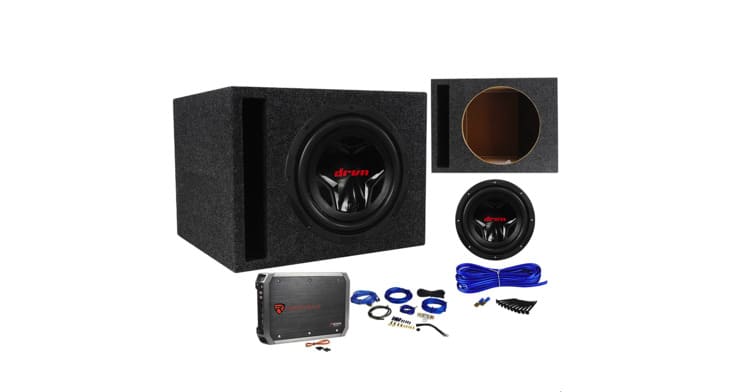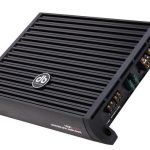A mono amp, also known as a monoblock amplifier, is a single unit that amplifies a mono (single) audio channel. It’s designed to amplify a mono channel instead of the amplified signal being shared between several channels. Thus, owning a mono amp offers a great opportunity to maximize bass. In this article, we’ll show you the process of wiring 2 subs to a mono amp.
Applications of Mono Amps

Before discussing how to wire subs to a monoblock amp, it’ll help to discuss the applications of mono amps. Essentially, a mono amp is used to amplify a mono signal. In case you’re dealing with two channels, such as a stereo signal, you’ll need two mono amps to amplify the signal. In this case, one mono amp will amplify the left channel whereas the second mono amp will amplify the right channel.
Since most TV and audio signals are mixed in stereo, most music systems use stereo amps. On the other hand, mono amps are commonly used in car audio systems for a more customized sound output. Their main benefit is that you can separate each channel for enhanced sound output.
Categories of Mono Amps
Monoblock amps are available as either Class AB monoblocks or class D monoblocks. They offer several advantages over multichannel amps.
Class AB Monoblocks
Many top-quality amps use Class AB amp design. Class AB amps use a line-level audio input to trigger it to power on. Upon sensing an input signal, the amp allows power to pass through. The amp keeps a minimal amount of power flowing through it to switch it regardless of whether a signal is flowing through it.
The design behind Class AB mono amps makes them more efficient in terms of power consumption than Class A amps. Also, these amps output cleaner sound. Monoblocks feature a single input, a single amp circuit, and a single power supply.
Class D Monoblocks
Class D monoblock amps feature a single channel like Class AB mono but operate differently. Rather than their power supply staying on at all times, they switch on and off rapidly in accordance with the input signal waveform. The fast switching makes them more power-efficient than Class AB monoblocks. Also, they’re smaller in size.
Benefits of Mono Amps
Mono amps offer numerous benefits over multichannel amps. For instance, they amplify a single sound channel. Thus, there’s a reduced likelihood of many channels mixing and muddying the sound output. Also, their dedicated power supply means that the channel being amplified gets sufficient power rather than the power being shared with other input channels.
Shortcomings of Mono Amps
While mono amps offer powerful amplification, especially for bass, they’re more expensive than multichannel amps. Since each mono amp is a single unit, you’ll need to invest in several mono amps to connect many subwoofers and speakers.
Wiring 2 Subs to Mono Amp
If you’ve invested in a mono amp, you can utilize it to get the best bass output from your subwoofer. Although a mono amp only amplifies a single channel, you can hook two subwoofers to one mono amp. To do this, you’ll need to follow some simple instructions. Here’s how to go about it:
Step 1- Get two lengths of high-quality speaker wire. One of the speaker wires will connect one of the subwoofers to the amplifier. The second speaker wire will connect the two subwoofers.
Step 2- Strip off ½ inch of insulation from both ends of the speaker wire to expose bare wire.
Step 3- Connect one end of one speaker wire to the amp output terminals. For most amps, you’ll need to loosen the screws on the terminals. Once done, insert the bare end of the speaker wire. Then tighten the screws. When connecting the speaker wire to the amp, ensure the positive end of the speaker wire connects to the positive terminal on the amp. Do the same for the negative terminals.
Step 4- Hook the other end of the speaker wire to the subwoofer input terminal.
Step 5- Hook the other speaker wire from the first subwoofer to the second subwoofer. To do this, insert the second speaker wire into the terminal of the subwoofer where you have inserted the cable coming from the amplifier. Next, hook the end of the second speaker wire to the second subwoofer. Ensure you connect the positive terminal of the first subwoofer to the positive terminal of the second subwoofer. Do the same for the negative terminals of the subwoofer. Tighten the terminals for a secure connection.
Step 6- Power on the amplifier and test the subwoofers. In this setup, the two subwoofers will share one mono amp in a parallel connection.
Final Thoughts
A mono amp only amplifies a single channel. Thus, it’s able to power subwoofers with sufficient power to produce deep bass. Although it only amplifies a single channel, you can still wire 2 subs to a mono amp by connecting them in parallel. That way, you don’t have to invest in two mono amps when connecting two subs.
Michael Evanchuk is a San Francisco-based sound engineer with 20 years’ experience installing, troubleshooting, and repairing commercial, automotive, and household sound equipment. Evanchuk owns an auto stereo center, where he offers highly competitive car audio installation and repair services. He has written dozens of articles on different sound engineering topics, all of which have been published in leading journals, blogs, and websites.






